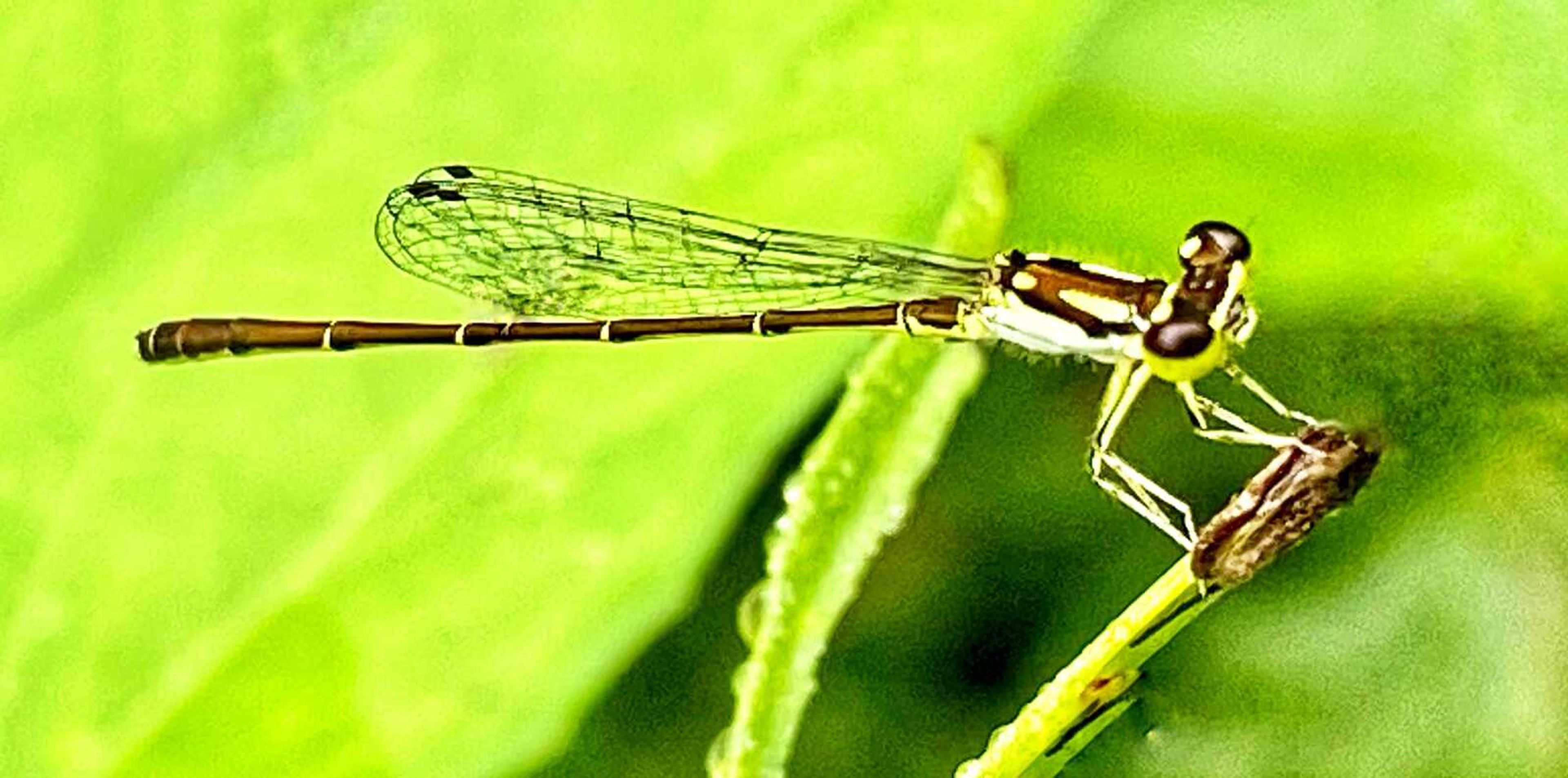This little insect is a marvel of the insect world. It has left fossil evidence proving that it was thriving on Earth during the time of dinosaurs at least 300 million years ago. As a nymph living underwater, it eats mosquito larvae and other tiny aquatic life. As an adult flying insect, it continues to feed on mosquitoes, catching them and other tiny insects in flight.
There are hundreds of different kinds and colors of damselflies all across the world. This is one that exists in Southeast Missouri.
Damselflies are often thought to be young dragonflies, but there are a few easy to recognize differences. A damselfly stands at rest with its wings folded together above its body. A dragonfly rests with its wings extending outward on either side of its body. Dragonflies are considerably larger than damselflies. And dragonflies have eyes that touch, whereas the eyes of a damselfly stick out on the sides of its head.
Connect with the Southeast Missourian Newsroom:
For corrections to this story or other insights for the editor, click here. To submit a letter to the editor, click here. To learn about the Southeast Missourian’s AI Policy, click here.










